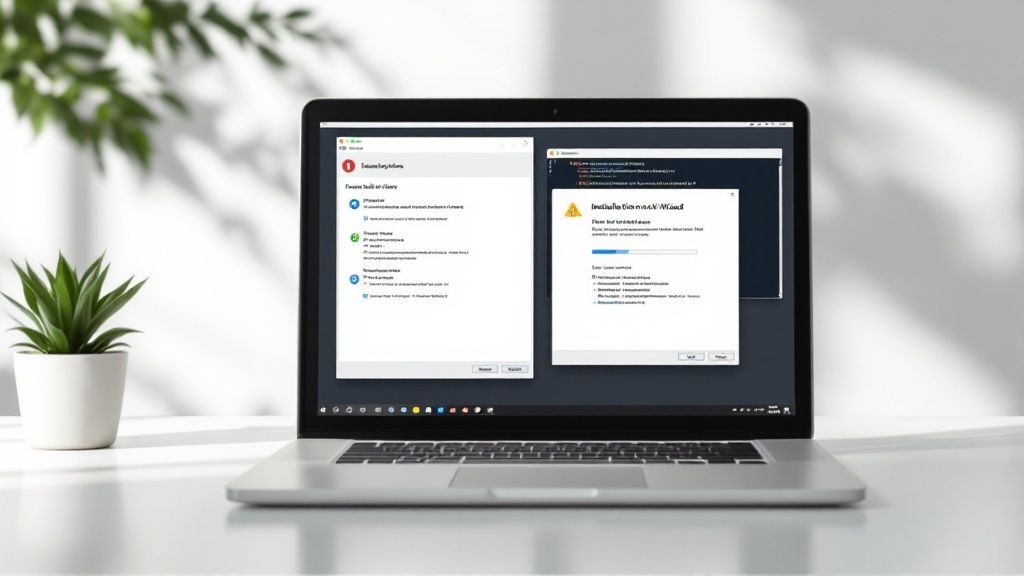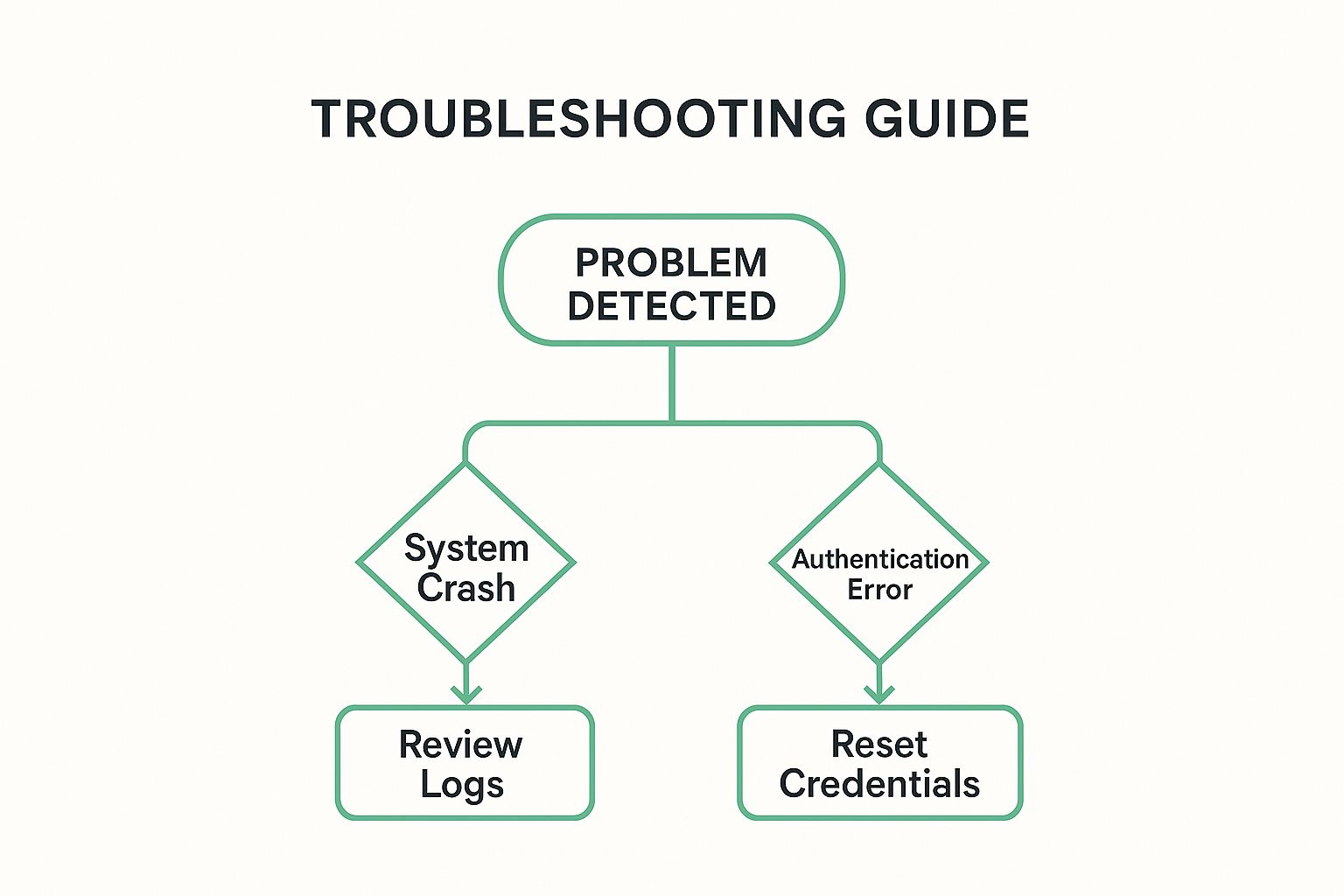Explore the key types of technical documentation essential for professionals in 2025. Learn how to master these vital documentation skills today!
In the world of technology, clear communication is the bedrock of success. From guiding a user through a new application to enabling developers to build upon existing systems, documentation serves as the essential blueprint. Yet, the term ‘technical documentation’ is a vast umbrella covering a diverse range of documents, each with a unique purpose, structure, and audience. Misunderstanding these distinctions can lead to project delays, user frustration, and wasted engineering resources.
This guide moves beyond generic definitions to provide a comprehensive breakdown of the most critical types of technical documentation. We will dissect each format, offering a clear-eyed analysis of its core function, key components, and the specific audience it serves. By understanding the strategic role of each document, from user-facing manuals to developer-centric API references, you gain the ability to communicate with precision and build more robust, scalable systems.
This roundup is designed for developers, project managers, and technical writers who need to create effective documentation that drives results. We will explore the practical implementation details for nine distinct types, including:
By mastering these formats, you equip your team with the knowledge needed to build, support, and evolve your technology with confidence. Let’s examine the blueprints that underpin successful software and hardware projects.
Need to streamline your documentation process? DocuWriter.ai uses AI to help you create clear, comprehensive, and consistent technical documentation faster.
API documentation is the foundational instruction manual for an Application Programming Interface (API). It acts as a critical reference, guiding developers on how to properly connect to and utilize the API’s services. This type of technical documentation outlines all necessary information, from authentication protocols and available endpoints to the specific formats for requests and responses. Without it, developers would be left to guess how to interact with the API, making integration a near-impossible task.

The primary goal of API documentation is to provide a clear, comprehensive, and developer-friendly experience that accelerates integration time and reduces friction. For businesses, this translates directly into faster product development cycles and wider adoption of their platform or service.
Effective API documentation goes beyond a simple list of endpoints. To be truly useful, it must include several key elements:
Companies like Stripe and Twilio have set the industry standard by providing documentation that is not only thorough but also highly interactive and intuitive. Adopting a specification like OpenAPI (formerly Swagger) helps enforce consistency and automates the generation of documentation from the API’s source code. To ensure your documentation is effective and user-friendly, consider reviewing these API documentation best practices.
Need to create clear and consistent API documentation? DocuWriter.ai helps you generate comprehensive, developer-friendly guides, complete with code examples and best practices, ensuring your API is easy to adopt and integrate.
User manuals are comprehensive guides designed to help end-users understand how to install, configure, operate, and troubleshoot products or software applications. This type of technical documentation translates complex functionality into accessible, task-oriented instructions for a typically non-technical audience. It serves as the primary support resource, empowering users to solve problems independently and get the most value out of a product. Without a clear user manual, even the most powerful software can feel confusing and unusable, leading to user frustration and abandonment.

The main goal of a user manual is to reduce the learning curve and build user confidence by providing step-by-step guidance. For businesses, this translates into fewer support tickets, increased customer satisfaction, and higher product adoption rates. A well-crafted manual is a critical asset that directly impacts the user experience.
An effective user manual prioritizes clarity, accessibility, and a task-based structure over a simple list of features. To be truly helpful, it must contain several essential elements:
Companies like Apple and Microsoft have set the standard with their intuitive, visually-rich user guides. A key practice is to test instructions with actual users before publishing to identify any points of confusion. This user-centric approach ensures the manual is genuinely helpful.
Need to create user manuals that your customers will actually read? DocuWriter.ai helps you build clear, task-oriented guides with easy-to-follow steps and visuals, reducing support load and boosting customer satisfaction.
Technical specifications are precise, detailed documents that define the requirements, constraints, and standards for a product, system, or project. They serve as an authoritative blueprint for engineering and development teams, ensuring that every stakeholder has an unambiguous understanding of what needs to be built, how it should perform, and the criteria it must meet. This type of technical documentation is essential for complex projects, from hardware manufacturing to software development, as it eliminates ambiguity and provides a verifiable basis for quality assurance.
The primary goal of a technical specification is to create a single source of truth that aligns design, development, and testing efforts. For organizations, this clarity prevents costly rework, streamlines collaboration between teams, and ensures the final product adheres to all necessary functional, performance, and regulatory requirements.
A truly effective technical specification provides a complete and testable description of the system. To achieve this level of detail, it must include several key components:
Organizations like the IEEE (with standards like IEEE 802.11 for Wi-Fi) and the W3C (with its HTML5 specification) demonstrate the power of rigorous technical specifications in creating interoperable and reliable technology. To ensure your own specifications are robust, it’s crucial to use precise language, version control all changes meticulously, and involve all relevant stakeholders in the review process.
Need to create detailed technical specifications for your project? DocuWriter.ai helps you draft comprehensive, unambiguous requirement documents that align your teams and ensure your product is built exactly as intended.
Installation guides are essential technical documents that provide step-by-step instructions for installing, configuring, and setting up a product. This can range from software applications and hardware systems to complex integrated solutions. A good installation guide is a roadmap that ensures users can successfully deploy a product in their specific environment, minimizing configuration errors and avoiding common pitfalls. Without this guidance, even the best software can be rendered useless if users cannot get it running correctly.

The primary goal of an installation guide is to create a smooth and error-free onboarding experience. For businesses, this directly impacts user adoption and reduces the burden on support teams, as a clear guide preemptively answers the most common setup questions. It is one of the most critical types of technical documentation for initial user success.
Effective installation guides are more than just a sequence of commands; they are comprehensive resources designed for clarity and success. To be truly effective, they must include several key elements:
Well-known examples like the Docker installation documentation and the classic WordPress “5-Minute Install” guide demonstrate how to empower users with concise, easy-to-follow instructions. Providing alternative installation methods, such as using package managers (npm, pip) versus manual setup, accommodates different user skill levels and preferences.
Need to create clear and repeatable installation guides? DocuWriter.ai helps you structure step-by-step instructions, include necessary prerequisites and troubleshooting tips, and ensure your users can get started without friction.
Troubleshooting guides are essential diagnostic documents designed to help users identify, diagnose, and resolve issues with a product, system, or piece of software. They act as a first line of defense, empowering users to solve common problems independently without escalating to support teams. This type of technical documentation provides a systematic, logical approach to problem-solving, often using decision trees and step-by-step procedures to guide a user from a problem symptom to its solution.

The primary goal of a troubleshooting guide is to reduce user frustration and minimize support ticket volume by providing clear, actionable steps. For businesses, this translates to lower support costs and a more self-sufficient, satisfied user base. A well-structured guide, like those provided by Microsoft for Windows or Atlassian for Jira, can turn a critical system failure into a manageable, solvable event.
Effective troubleshooting guides anticipate user problems and provide a structured path to resolution. To be truly effective, a guide must contain several key elements:
Organizations like Cisco and open-source communities like Stack Overflow excel at this by creating dynamic, community-vetted troubleshooting resources. The key is to think like a user in distress and provide the exact information they need, when they need it, in the clearest format possible.
Need to create clear and consistent troubleshooting guides? DocuWriter.ai helps you structure problem-solving steps, generate diagnostic instructions, and create user-friendly guides that reduce support tickets and empower your customers.
Code documentation is embedded within or alongside a codebase, serving as a critical guide for developers. It explains how the code functions, clarifies the rationale behind architectural and algorithmic decisions, and provides instructions for maintenance and contribution. This type of technical documentation ranges from inline comments and function headers to comprehensive README files and architectural decision records. Without it, a codebase becomes opaque and difficult to manage, increasing onboarding time and the risk of introducing bugs.
The primary goal of code documentation is to create a sustainable and collaborative development environment. It ensures that knowledge isn’t siloed with individual developers but is instead captured directly within the project, making the codebase more accessible and easier to evolve over time. For development teams, this leads to higher code quality, faster debugging, and more efficient collaboration.
Effective code documentation provides context that the code itself cannot convey. To be truly valuable, it should integrate several key elements:
Pioneered by figures like Donald Knuth and widely adopted in open-source communities like the Linux kernel and Python, good documentation is a hallmark of mature software engineering. Utilizing tools like JSDoc for JavaScript or Sphinx for Python can automate the generation of documentation from code comments, ensuring consistency. Mastering these techniques is crucial for any team, and you can explore more strategies by reviewing these best practices for code documentation.
Need to maintain clear and consistent code documentation? DocuWriter.ai helps your team establish best practices and generate essential guides from your codebase, reducing technical debt and accelerating developer onboarding.
Standard Operating Procedures (SOPs) are detailed, written instructions that codify how to perform routine tasks consistently and safely. They serve as a single source of truth for operational workflows, ensuring that every action is executed correctly, every time. This type of technical documentation is critical for maintaining quality control, achieving regulatory compliance, and boosting organizational efficiency by eliminating guesswork and reducing variability in performance.
The primary goal of an SOP is to standardize processes, which leads to predictable outcomes and minimizes errors. For industries where precision is non-negotiable, like pharmaceuticals or aviation, SOPs are not just best practices; they are foundational requirements for safety and legality. Implementing clear SOPs allows organizations to scale operations, train new personnel effectively, and create a culture of accountability.
A truly effective SOP is more than a simple checklist; it is a comprehensive guide that anticipates user needs and potential deviations. To ensure operational excellence, it must include several key elements:
Organizations adhering to frameworks like ISO 9001 for quality management or following FDA regulations for pharmaceutical manufacturing rely heavily on robust SOPs. Similarly, aviation maintenance procedures and hospital patient care protocols are prime examples of SOPs where meticulous adherence is crucial for safety and success.